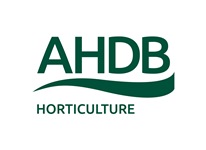All entries for Tuesday 06 September 2016
September 06, 2016
Pest update from Wellesbourne
Since Friday we have captured:
In pheromone traps (2 per species):
- Turnip moth = 0
- Silver Y moth = 0
- Cabbage moth = 0
- Diamond-back moth = 0
On 3 sticky traps:
- Carrot fly = 18 (in second sowing)
In 3 water traps:
- Cabbage root fly males = 2
- Cabbage root fly females = 30
- Bean seed flies = 9
- Flea beetles = 14
- Pollen beetles = 0
- Small white butterfly = 8
- Large white butterfly = 0
- Cabbage stem weevil = 0
Cabbage root fly eggs = 12 (15 plants)
On our untreated brassicas there are a few cabbage aphid colonies and a developing infestation of cabbage whitefly.
Brassica aphids and virus News
The proportion of peach potato aphid (M. persicae) carrying Turnip yellows virus (TuYV)
|
Date |
Type of trap |
Numbers of M. persicae caught |
% of those tested carrying TuYV |
|
Wellesbourne, Warwickshire |
|||
|
22/8-28/8/2016 |
Suction trap |
0 |
- |
|
25/8-30/8/2016 |
Yellow water traps |
2 |
0% |
|
30/8-01/9/2016 |
Yellow water traps |
4 |
50% |
|
Kirton, Lincolnshire |
|||
|
22/8-28/8/2016 |
Suction trap |
0 |
- |
|
Leverton, Lincolnshire |
|||
|
25/8-30/8/2016 |
Yellow water traps |
16 |
63% |
|
30/8-01/9/2016 |
Yellow water traps |
13 |
46% |
Turnip yellows virus (TuYV), formerly known as Beet western yellows virus, is a very important pathogen of vegetable brassicas and oilseed rape. It is spread by the peach potato aphid (Myzus persicae).
This data is collected as part of project ‘Developing integrated approaches for pest and disease control in horticultural field crops’ with funding from the BBSRC Horticulture And Potato Initiative (HAPI).
Diana Katschnig and Angela Hambidge, Plant-Virus Interactions Group, University of Warwick; Alex Greenslade, Rothamsted Research & Rothamsted Insect Survey; Carl Sharp, Allium & Brassica Agronomy Ltd.
 Rosemary Collier
Rosemary Collier

 Please wait - comments are loading
Please wait - comments are loading
 Loading…
Loading…
